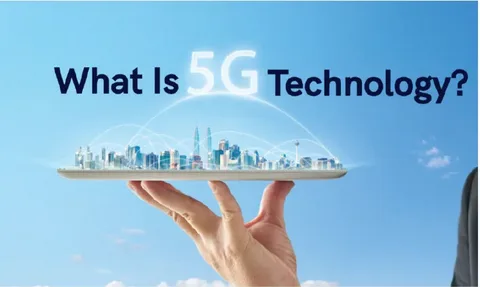The Rise of 5G Technology and Its Impact on Connectivity

Introduction to 5G Technology
The advent of 5G technology is set to revolutionize how we connect to the internet and interact with the digital world. As the fifth generation of mobile networks, 5G promises faster speeds, lower latency, and the ability to connect a vast number of devices simultaneously. This article explores the fundamentals of 5G technology, its benefits, challenges, and its transformative potential across various industries.
Understanding 5G Networks
5G networks are designed to provide significantly higher data rates compared to previous generations. The technology utilizes a combination of different frequency bands, including low-band, mid-band, and high-band (millimeter wave), to achieve its impressive capabilities.
- Low-band 5G offers extensive coverage but lower speeds, making it suitable for rural areas.
- Mid-band 5G strikes a balance between speed and coverage, providing faster speeds in urban settings.
- High-band 5G, or millimeter wave, delivers ultra-fast speeds but has limited range and penetration, making it ideal for dense urban environments.
The combination of these frequency bands allows 5G to deliver seamless connectivity and high-speed internet access.
Benefits of 5G Technology
Enhanced Speed and Performance
One of the most significant advantages of 5G is its speed. With theoretical download speeds of up to 10 Gbps, 5G can transmit data at rates that are ten to twenty times faster than 4G networks. This enhancement enables seamless streaming of high-definition content, quick downloads, and improved online gaming experiences.
Lower Latency
Latency, the time it takes for data to travel from the source to the destination, is crucial in real-time applications. 5G technology significantly reduces latency to as low as 1 millisecond, which is essential for applications such as virtual reality (VR), augmented reality (AR), and autonomous vehicles. This responsiveness enhances user experiences and enables real-time data processing.
Massive Device Connectivity
5G networks can support a massive number of connected devices simultaneously. This capability is particularly important for the Internet of Things (IoT), where billions of devices, from smart home appliances to industrial sensors, require constant connectivity. 5G’s ability to handle a high density of connections will drive the growth of smart cities, connected vehicles, and other IoT applications.
The Impact of 5G on Industries
Healthcare
The healthcare sector stands to benefit immensely from 5G technology. With lower latency and higher data transfer speeds, telemedicine services can become more effective, allowing doctors to conduct remote consultations with real-time video. Additionally, wearable health devices can transmit data quickly, enabling healthcare providers to monitor patients remotely and respond to emergencies promptly.
Transportation and Logistics
5G technology is poised to revolutionize transportation and logistics through enhanced connectivity. Autonomous vehicles rely on real-time data to navigate safely. With 5G, these vehicles can communicate with each other and with traffic management systems to optimize routes, reduce traffic congestion, and improve safety.
In logistics, companies can track shipments in real time, ensuring transparency and efficiency. Enhanced connectivity allows for better inventory management, reducing costs and improving customer satisfaction.
Entertainment and Media
The entertainment industry is also set to benefit from 5G technology. With faster download speeds, users can stream high-definition content without buffering. Additionally, 5G will enhance the gaming experience, allowing for smoother gameplay and quicker response times. Virtual reality and augmented reality applications will become more accessible, offering immersive experiences that were previously not possible.
Subtopic: The Role of 5G in Smart Cities
Building Intelligent Urban Environments
5G technology plays a crucial role in the development of smart cities. By enabling a vast array of connected devices and applications, 5G allows cities to operate more efficiently. For example, smart traffic management systems can analyze real-time data to optimize traffic flow, reducing congestion and emissions.
Enhancing Public Safety
5G can also improve public safety through enhanced surveillance systems. High-definition cameras equipped with 5G can provide real-time monitoring of public spaces, allowing authorities to respond quickly to incidents. Additionally, emergency services can utilize 5G to transmit data and coordinate responses more effectively.
Facilitating Sustainable Development
With the ability to connect numerous sensors and devices, 5G supports sustainable urban development. Smart energy grids can optimize energy consumption, while waste management systems can monitor waste levels and streamline collection routes. This integration leads to a more sustainable and efficient use of resources.
Challenges in Implementing 5G Technology
While the benefits of 5G are substantial, there are challenges to its implementation.
Infrastructure Requirements
The deployment of 5G requires significant investment in infrastructure. The technology relies on a dense network of small cell towers, which need to be installed in various locations. This presents logistical challenges and requires collaboration between government bodies, telecommunications companies, and urban planners.
Spectrum Allocation
The allocation of spectrum for 5G use is another challenge. Governments must ensure that there is sufficient spectrum available to meet the demands of 5G technology. This involves navigating complex regulatory environments and competing interests among different stakeholders.
Security Concerns
As with any new technology, security is a concern with 5G. The increased number of connected devices and the vast amounts of data being transmitted create new vulnerabilities. Ensuring robust security measures will be essential to protect sensitive information and maintain user trust.
The Future of 5G Technology
The future of 5G technology looks promising. As more devices become interconnected, the demand for high-speed, reliable internet will continue to grow. Innovations in fields such as smart cities, IoT, and autonomous vehicles will thrive with the capabilities provided by 5G networks.
Telecommunications companies are actively working on rolling out 5G networks globally, and as the technology matures, we can expect to see enhanced applications and services that were once considered science fiction.
Subtopic: Global 5G Adoption Trends
Adoption Rates Across the Globe
5G adoption varies across different regions, with some countries leading the charge. South Korea, China, and the United States are among the frontrunners in deploying 5G networks. These countries have made significant investments in infrastructure and technology, allowing them to offer extensive 5G coverage to their populations.
The Role of Government Policies
Government policies play a crucial role in the adoption of 5G technology. Countries that have streamlined regulations and invested in infrastructure are seeing faster adoption rates. Public-private partnerships can also enhance the deployment of 5G networks, facilitating collaboration between telecom companies and governments.
The Impact of 5G on Global Economies
The rollout of 5G technology is expected to have a significant economic impact. According to various reports, the global 5G economy could generate trillions of dollars in economic value over the next decade. This growth will be driven by increased productivity, new business models, and enhanced consumer experiences.
Conclusion
The rise of 5G technology is set to transform how we connect and interact with the world around us. With its remarkable speed, lower latency, and ability to connect numerous devices, 5G will revolutionize industries, enhance user experiences, and drive innovation. As we move toward a more connected future, embracing the potential of 5G will be crucial for businesses and consumers alike.








